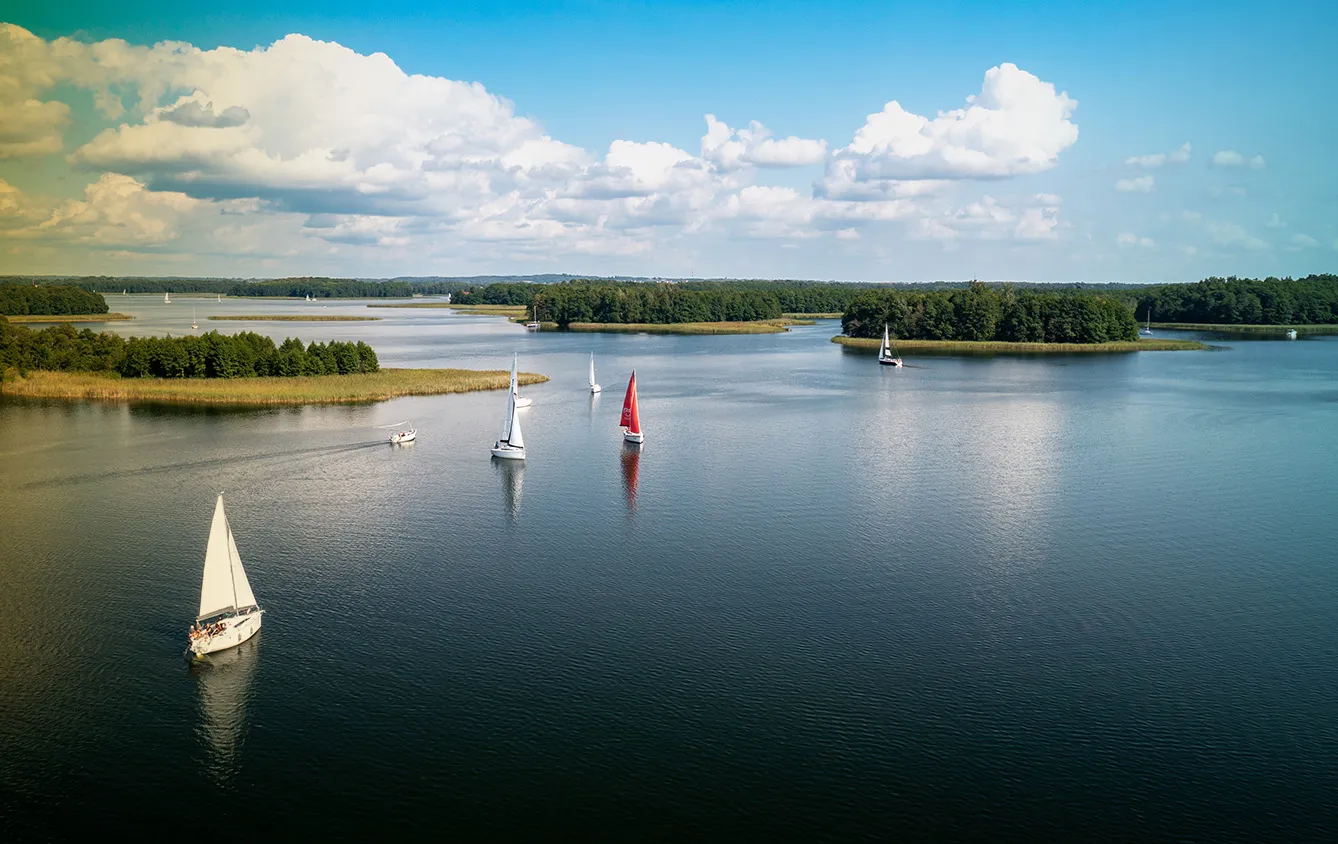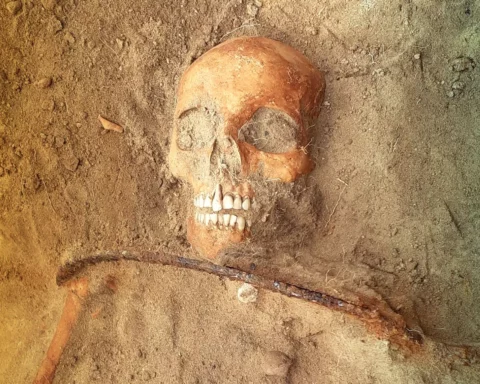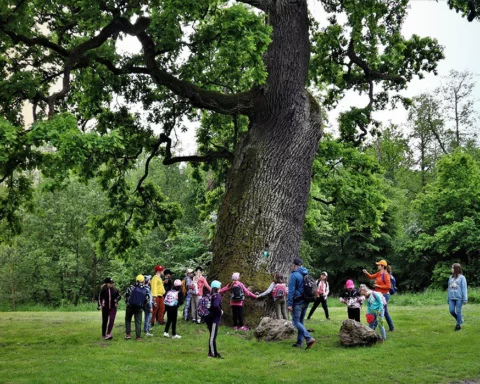Have you ever seen a lake that turns white, not in the winter, but in the middle of the summer heat? You can – in the lake district of Masuria in northeastern Poland, where a birdseye view of the network of large lakes, rivers, and canals shows a sea of white thanks to the masses of yacht sails in an area called the Thousand Lake District.
Sailing conditions draw sailors from around the country (and abroad) to Mazury: the largest of lakes, Śniardwy, is 22 kilometers wide and over a hundred kilometers sq in area. Another, only a bit smaller, is Lake Mamry to the north, and between them, there is still a fair place to sail, Lake Niegocin.
A week of fun in an hour
But it is not the three large lakes and some smaller (but still fun to sail) that make sailors happy. It’s all about how they’re connected – with sailable rivers and purposefully built canals so that starting, say, in Węgorzewo, the northernmost city on the trail, you can sail all the way to southernmost Pisz, which is an hour by car, but by sail can give you a week of fun.
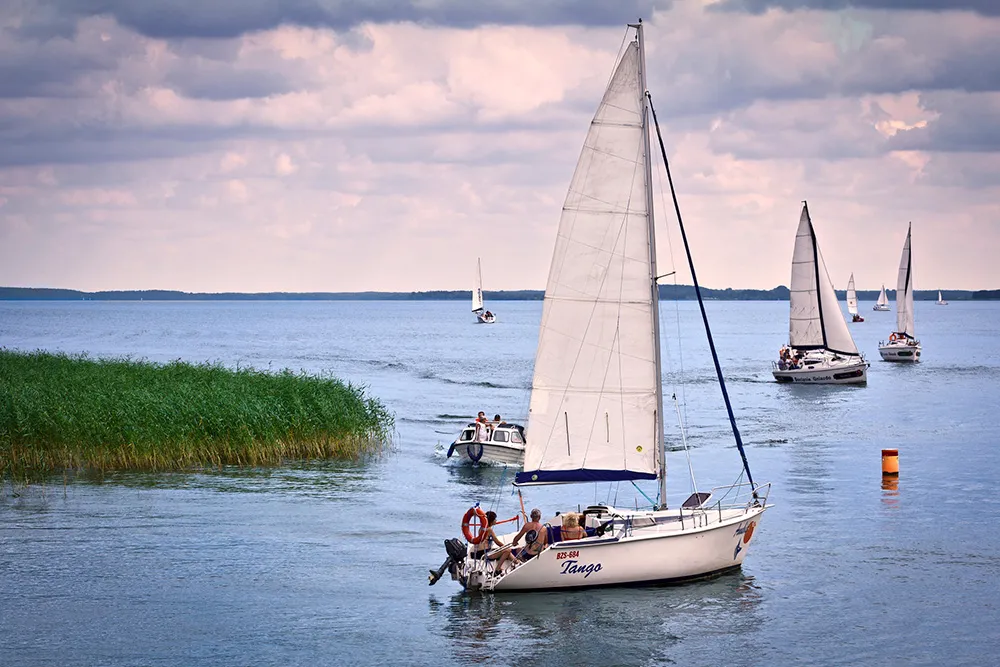

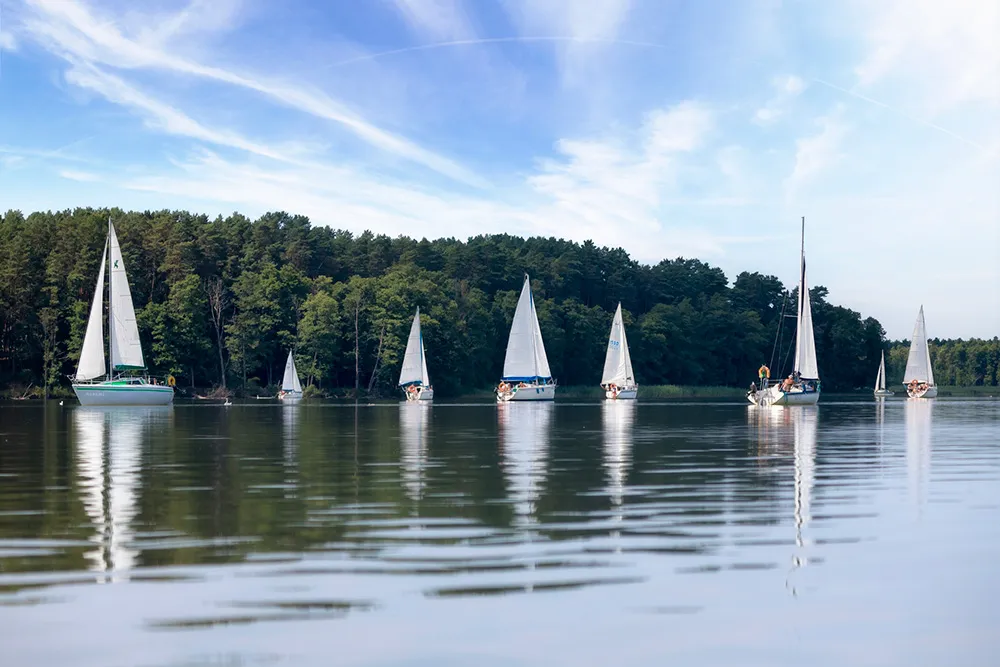

The Mazury Great Lakes District is a network of dozens of postglacial lakes. To make them even more fun, a network of Masurian canals was developed back in the 1850s. The two towns of Pisz and Węgorzewo were connected by a steamship in 1859, but it is said that in the 14th century, one Teutonic knight grand master took the route on a small boat. Also, in the 17th century, some plans to build a network were laid out, and some canals were developed in the 18th century. The North-South route has been basically unchanged since the mid-19th century, and a few locks operate to allow sailing along the route.
In previous centuries, the waterways allowed the development of a forest economy. Even during World War II, the Lake District, close to the Baltic Sea, was equally important to the Nazi fleet and the land forces. Rumors have it that the unfinished Masurian Channel was developed as a part of the U-boat shipyard.
But now, the next-to-only industry in the area is tourism. Socialist Poland was very serious about promoting outdoor sports and hobbies; even landlocked cities could have had significant youth sailing organizations. Masuria was a summer destination for many of them, leading to sailing-tramping mythos and student leisure culture. Yachting could have also been a sign of status – as was shown in “Knife in the Water,” Roman Polanski’s movie debut.
Sailing days and tavern nights
With the average yacht being ten meters long and with a two-sail sloop, the nature of the recreation is errs more on the side of community spirit than on rich people showing off. Decades of traditions in developing tourism made the sailing spots industry bloom. Sailing all day, you can stop in any of dozens of larger or smaller ports, sleep on your tiny yacht and use the shower on solid ground. You can also… leave the shower for the next day and sleep overnight in the wild, among reeds on the wild lake shore.
The season in Masuria Great Lakes District officially opens on May 1st, with all the warm weekends in May and June already busy with sailboats and motorboats. July and August are not terribly windy, and lakes are crowded, as these are the months of school vacations.
University-aged students prefer the period from September to October while it’s still warm and windy, but the younger sailors have already headed back to school (*universities in Poland start back in October). As the academic vacations end, so does (coincidentally) the sailing season. No more shanty concerts in ports or races organized by tavern owners.
Still, you can have a beer in a portside inn and dream of passing through the northwest passage – and then, the winter comes, and what you dream of is to sail from Węgorzewo to Pisz again, wandering through the Mamry, Niegocin, Mikołajskie, and Śniardwy Lakes.


